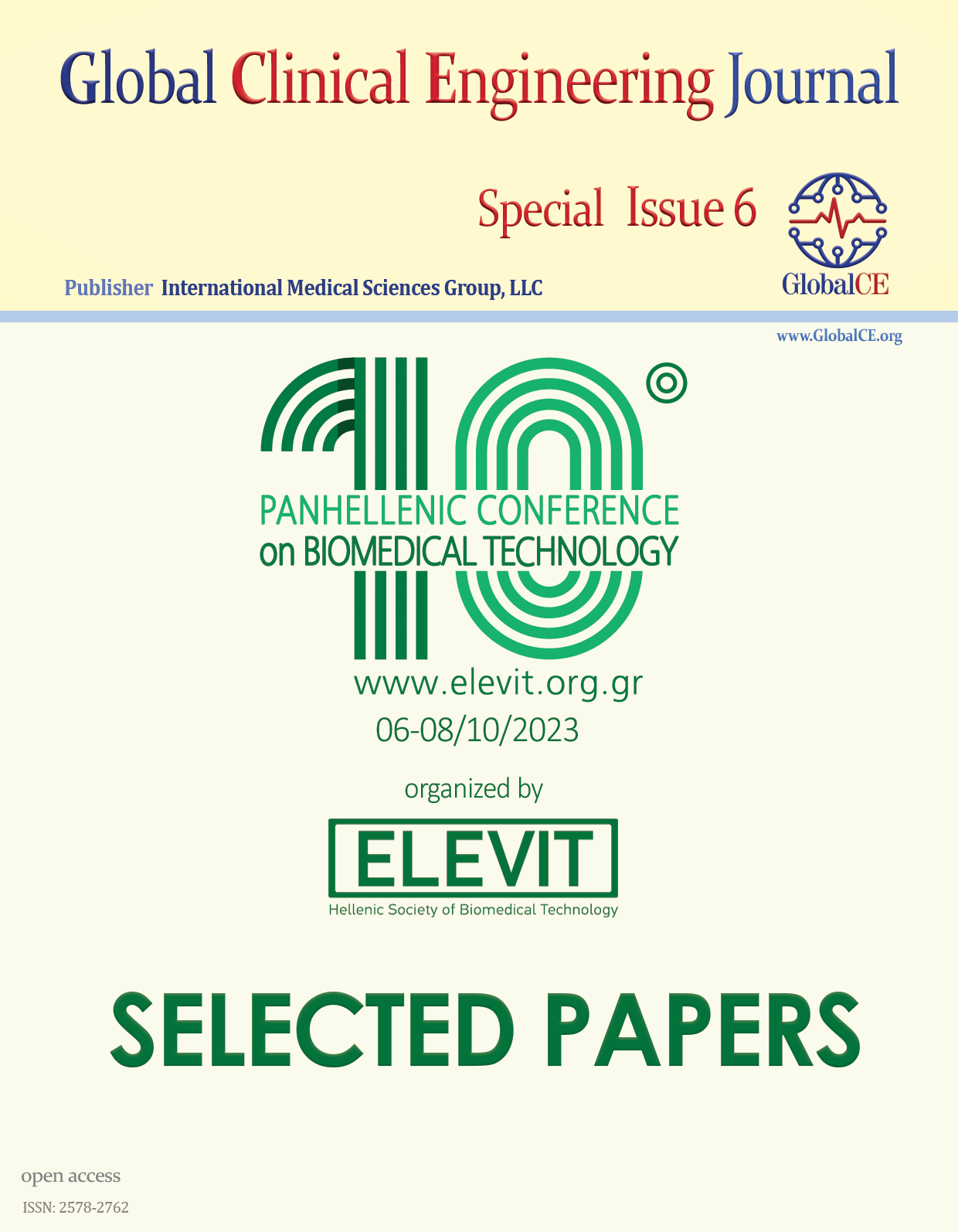Revolutionizing Healthcare Education: Mobile Virtual Patients for Digital Problem-Based Learning
Main Article Content
Keywords
Mobile Virtual Patients (MVPs), Problem-based Learning, Clinical reasoning, Usability, Healthcare Education
Abstract
The move to student-centered medical curriculum places greater emphasis on active learning and the development of clinical reasoning skills. Virtual Patients, defined as computer-based programs that simulate real-life clinical scenarios, have become increasingly popular as an enhancement to medical training. This study explores the usability and effectiveness of Mobile Virtual Patients (MVPs) in supporting healthcare professionals and medical students to develop skills related to symptom management, diagnosis, and treatment in the context of the H2020 SHAPES project for older adults. Fourteen participants, divided into two groups of seven each from the University of Nicosia and Aristotle University of Thessaloniki, respectively, participated in PBL sessions using MVPs. These cases encompassed various conditions, from neurodegenerative diseases to chronic conditions, focusing on participants active engagement and inquiry-based learning. The System Usability Scale (SUS) and the Electronic Virtual Patients (eViP) toolkit were applied, which brought usability, technology acceptance, and clinical reasoning into perspective. Results showed high usability, with healthcare professionals giving an SUS of 86.2, compared to 77.5 for medical students. Both groups reported positive experiences, but medical students rated the learning effect and coaching higher than healthcare professionals. This suggests that MVPs are valuable instruments in enhancing clinical reasoning and knowledge acquisition. It further emphasizes the customization of MVPs for the various needs of a medical student and a healthcare professional to realize optimized educational outcomes. Future studies should address scalability, infrastructure needs, and inclusion in broader medical curricula to further advance the spread within healthcare education.
Downloads
Abstract 538 | PDF Downloads 73
References
2. Dafli, E., Fountoukidis, I., Hatzisevastou-Loukidou, C., & D Bamidis, P. (2019). Curricular integration of virtual patients: a unifying perspective of medical teachers and students. BMC Medical Education, 19, 1-11.
3. Cardoso, S. A., Suyambu, J., Iqbal, J., Jaimes, D. C. C., Amin, A., Sikto, J. T., ... & Kuruba, V. (2023). Exploring the Role of Simulation Training in Improving Surgical Skills Among Residents: A Narrative Review. Cureus, 15(9), e44654.
4. Moll-Khosrawi, P., Zöllner, C., Cencin, N., & Schulte-Uentrop, L. (2021). Flipped learning enhances non-technical skill performance in simulation-based education: a randomised controlled trial. BMC Medical Education, 21(1), 1- 12.
5. Peddle, M., Mckenna, L., Bearman, M., & Nestel, D. (2019). Development of non-technical skills through virtual patients for undergraduate nursing students: An exploratory study. Nurse education today, 73, 94-101.
6. Senbekov, M., Saliev, T., Bukeyeva, Z., Almabayeva, A., Zhanaliyeva, M., Aitenova, N., ... & Fakhradiyev, I. (2020). The recent progress and applications of digital technologies in healthcare: a review. International journal of telemedicine and applications.
7. Association of American Medical Colleges (AAMC). (2007). Effective use of educational technology in medical education--colloquium on educational technology: recommendations and guidelines for medical educators [accessed 12 September 2023]. AAMC Institute for Improving Medical Education.
8. Kononowicz, A. A., Zary, N., Edelbring, S., Corral, J., & Hege, I. (2015). Virtual patients-what are we talking about? A framework to classify the meanings of the term in healthcare education. BMC medical education, 15(1), 1-7.
9. Heinrichs, L., Dev, P. and Davies, D. (2017). Virtual environments and virtual patients in healthcare. In Healthcare Simulation Education (eds D. Nestel, M. Kelly, B. Jolly and M. Watson). https://doi.org/10.1002/9781119061656.ch10
10. Bamidis, P. D. (2017). Brain Function Assessment in Learning. In First International Conference, Brain Function Assessment in Learning. Springer International Publishing, Patras.
11. Triola, M., Feldman, H., Kalet, A. L., Zabar, S., Kachur, E. K., Gillespie, C., ... & Lipkin, M. (2006). A randomized trial of teaching clinical skills using virtual and live standardized patients. Journal of general internal medicine, 21(5), 424-429.
12. ΑΡΙΑΔΝΗ. OpenLabyrinth. Available online: https://vp.med.auth.gr/ariadne [accessed 12 September 2023]
13. SHAPES Mobile Virtual Patients App. Available online: https://shapes-26bd2.web.app/ [accessed 12 September 2023]
14. SHAPES Project. Available online: https://shapes2020.eu/ [accessed 12 September 2023]
15. Dratsiou, I., Villacañas, O., Cooper, S., Isaris,Fernandez-Carbajales, V. (2021, June). Assistive Technologies for Supporting Wellbeing of Older Adults. In The 14th PErvasive Technologies Related to Assistive Environments Conference (pp. 33 P., Serras, M., Unzueta, L., & 8-341).
16. Thessaloniki Action for HeAlth & Wellbeing Living Lab (Thess-AHALL). Available online: https://aha livinglabs.com/ [accessed 12 September 2023]
17. Lewis, J. R., & Sauro, J. (2009). The factor structure of the system usability scale. In Human Centered Design: First International Conference, HCD 2009, Held as Part of HCI International 2009, San Diego, CA, USA, July 19-24, 2009, Proceedings 1 (pp. 94- 103). Springer Berlin Heidelberg.
18. Electronic Virtual Patient Project (eViP) URL: http://virtualpatients.eu/ [accessed 12 September 2023]






